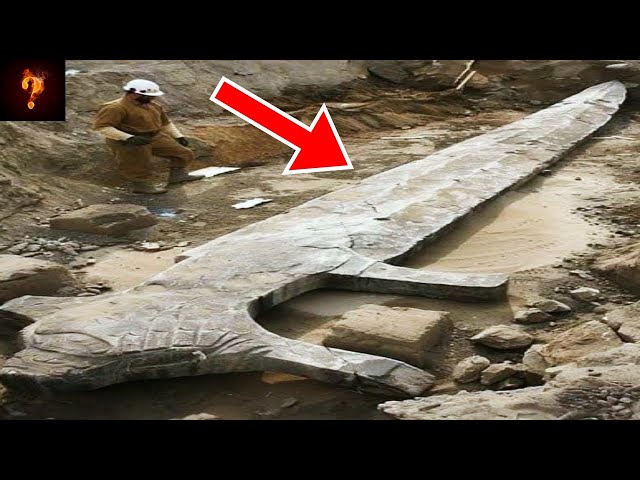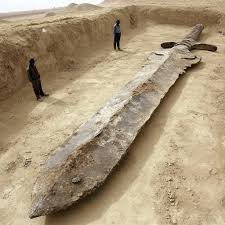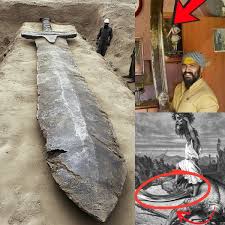The sensational claim that archaeologists discovered a 10-meter sword in the desert, believed to belong to a legendary king who fought giants, echoes ancient myths.
The sensational claim that archaeologists discovered a 10-meter sword in the desert, believed to belong to a legendary king who fought giants, is a modern piece of folklore that has no basis in archaeological reality. The story, which often circulates in online hoaxes, taps into a universal fascination with heroic myths and ancient giants. There has been no credible discovery of a sword of this size, as it would be both a metallurgical impossibility for ancient civilizations and a completely impractical weapon for any human, or even a giant, to wield.

The allure of this tale comes from its connection to legendary figures who battled monstrous beings. Myths of heroes and giants are found in cultures all over the world, from the biblical story of David and Goliath to the exploits of the Greek hero Heracles. These stories are a fundamental part of our shared cultural heritage, but they belong to the realm of mythology, not archaeological fact.

However, the world of archaeology has made genuine discoveries of swords that, while not 10 meters long, are historically significant and equally captivating. The discovery of a ceremonial sword from a Bronze Age burial mound, for example, can provide invaluable information about a culture’s social hierarchy, religious beliefs, and artistic craftsmanship. The famous find of a Viking sword in a Norwegian burial or the discovery of an ancient Celtic sword at a historical battle site are real examples of how weapons, as artifacts, can unlock a hidden chapter of history. These finds, while not as sensational as a myth, are far more meaningful to our understanding of the past.
